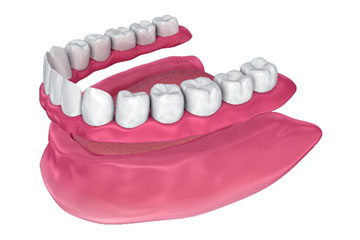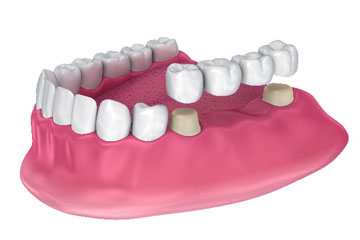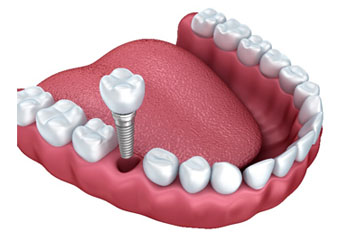No matter how well we all look after our teeth, there may come a point where it is not possible to save a tooth. No one wants to be left with a gap which can affect your confidence and self-esteem so in this month’s blog we look at the potential options to fill a space left by an extracted tooth.
- Leave it
If the tooth is not visible when you talk and smile and doesn’t affect your ability to eat a wide and varied diet, then it may be possible to leave the gap. The dentist will monitor the gap at each routine visit as there is the possibility that the remaining teeth on either side of the gap may move and twist into the remaining space and this can affect and change your bite. It is also possible that the gap may provide an area for food to become trapped and if left this can provide a breeding ground for bacteria which in the long term can lead to gum disease and tooth decay.
- A Denture
A denture can be used to fill the gaps caused by one or more missing teeth. They are either made of chrome (metal) or acrylic (plastic) and are made by a laboratory technician from impressions taken of your mouth. They are custom made and no two sets of dentures will ever be the same. Dentures can also be fitted with clasps which fit around your remaining teeth to help improve stability.
Dentures can be fitted immediately after a tooth is extracted which means that you will not need to worry about a gap being visible. However as the socket heals the gum below the denture will shrink and this will mean that the denture will need relining or remaking at a later date to ensure that it continues to fit comfortably.
- A Dental Bridge
A dental bridge is created by placing crowns on the teeth on either side of a gap and joining them together with false teeth. The bridge will be made from a ceramic material that will closely match the natural colour of your teeth so when the bridge is cemented in place you will not be able to tell it apart from your natural teeth.
In order to create the bridge the teeth either side of the gap need to be healthy enough to support the false teeth. Bridges are normally expected to have a lifespan of 5-10 years.
- Dental Implant
Dental implants have increased in popularity over the past 20 years and are now a reliable and trusted way to fill a gap caused by a missing tooth. A titanium screw is placed into your jaw and this provides the base for either a crown or bridge, so dental implants can be used to replace one or several missing teeth.
A full assessment will need to be carried out prior to starting treatment to determine the level and health of bone present in your jaw. If the bone is not sufficient or healthy enough it will not be possible to proceed with dental implants unless a bone graft is first performed.
Once the titanium screw is inserted you will need to wait for 3-4 months for the bone to heal around the screw before the restoration can be put on top. If cared for properly a dental implant should last as long as you natural teeth and it is currently the closest possible restoration to your natural teeth.
Looking for options to fill an unsightly gap, improving your confidence and self-esteem, call Maidstone Dental & Implant Centre, today on 01622 682029 to book a consultation appointment and start your journey to the smile you desire.








